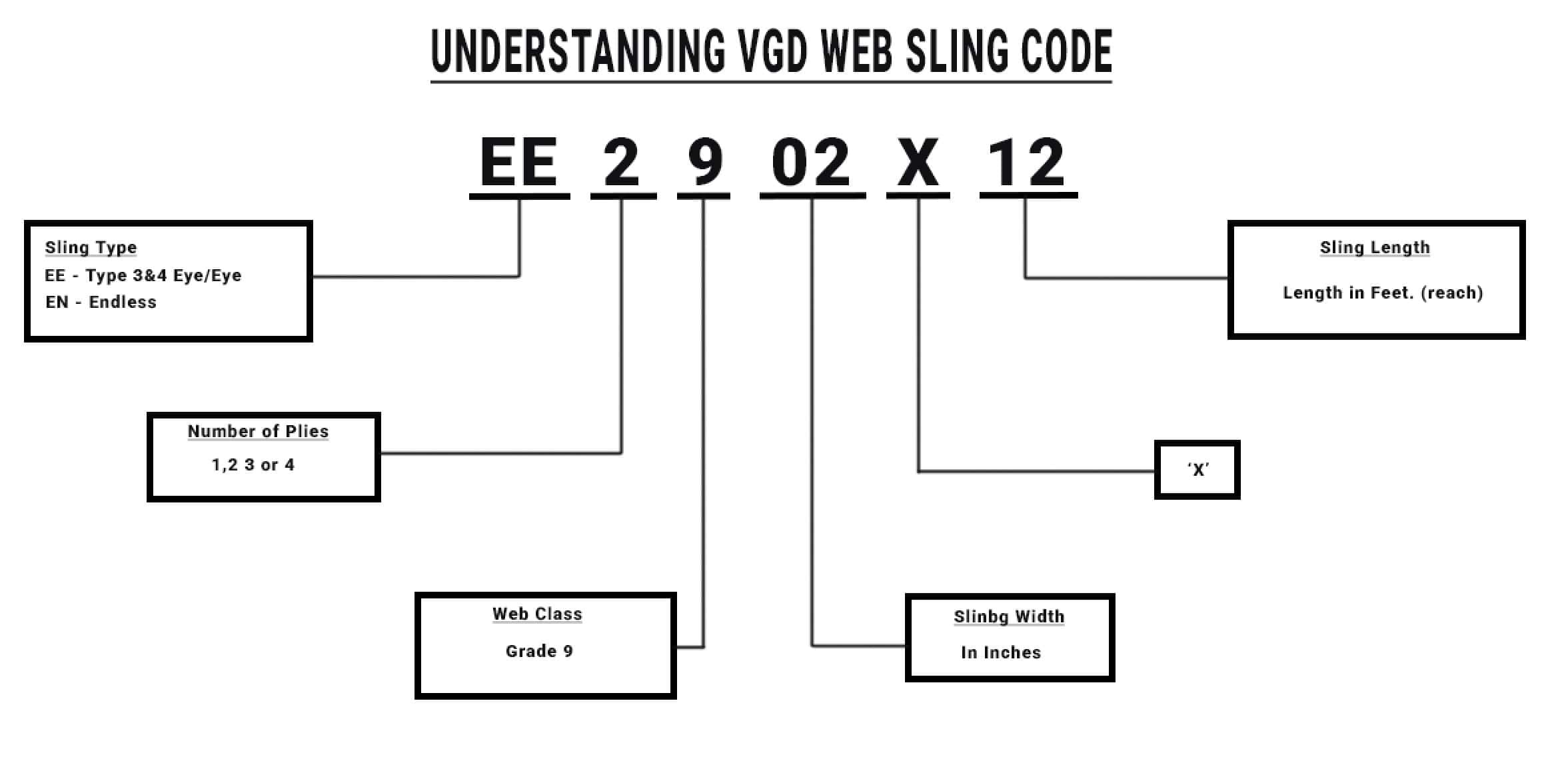Polyester Lifting Slings - e series

Economy Meets Excellence: Our New E-Series Polyester Lifting Slings
Introducing our new E-Series Polyester Lifting Slings, a testament to our commitment to providing quality lifting solutions without compromising on affordability.
While designed with a focus on price, these slings maintain the same rigorous standards and meticulous attention to detail as our premium VQ-series.
Perfect for standard duty or short-term lifting tasks, the E-Series offers a reliable and cost-effective option.
Whether you’re a DIY enthusiast, a small business owner, or a contractor, the E-Series is the ideal choice. Don’t sacrifice quality for cost; choose the E-Series and experience the perfect blend of economy and excellence.
VGD polyester slings are engineered for precision lifting, providing maximum control and safety. Their low stretch factor ensures minimal elongation under load, maintaining a secure grip on your lifted objects and preventing sudden drops or swings. This critical feature allows for smooth, controlled lifts, reducing the risk of accidents and damage to both the load and the lifting equipment.
Coupled with high-quality stitching, VGD slings offer exceptional durability and load-bearing capacity. The robust stitching reinforces the strength of the straps, enabling them to withstand heavy loads and the rigors of repeated lifting without compromising safety.

Polyester Lifting Slings - E Series
| Type | Width x Length | Product Code | Work Load Limit Lbs | Weight | ||
| Inches x Ft. | Vertical | Choker | Basket | Lbs/Pc | ||
| EE2-901 | 1 X 2 | 3403 0102 | 3,100 | 2,480 | 6,200 | 0.38 |
| EE2-901 | 1 X 3 | 3403 0103 | 3,100 | 2,480 | 6,200 | 0.57 |
| EE2-901 | 1 X 4 | 3403 0104 | 3,100 | 2,480 | 6,200 | 0.76 |
| EE2-901 | 1 X 6 | 3403 0106 | 3,100 | 2,480 | 6,200 | 1.14 |
| EE2-901 | 1 X 8 | 3403 0108 | 3,100 | 2,480 | 6,200 | 1.52 |
| EE2-901 | 1 X 10 | 3403 0110 | 3,100 | 2,480 | 6,200 | 1.90 |
| EE2-901 | 1 X 12 | 3403 0112 | 3,100 | 2,480 | 6,200 | 2.28 |
| EE2-901 | 1 X 16 | 3403 0116 | 3,100 | 2,480 | 6,200 | 3.04 |
| EE2-901 | 1 X 18 | 3403 0118 | 3,100 | 2,480 | 6,200 | 3.42 |
| EE2-902 | 2 X 2 | 3403 0202 | 6,200 | 4,960 | 12,400 | .072 |
| EE2-902 | 2 X 3 | 3403 0203 | 6,200 | 4,960 | 12,400 | |
| EE2-902 | 2 X 4 | 3403 0204 | 6,200 | 4,960 | 12,400 | |
| EE2-902 | 2 X 6 | 3403 0206 | 6,200 | 4,960 | 12,400 | 2.16 |
| EE2-902 | 2 X 8 | 3403 0208 | 6,200 | 4,960 | 12,400 | 2.88 |
| EE2-902 | 2 X 10 | 3403 0210 | 6,200 | 4,960 | 12,400 | 3.60 |
| EE2-902 | 2 X 12 | 3403 0212 | 6,200 | 4,960 | 12,400 | 4.32 |
| EE2-902 | 2 X 14 | 3403 0214 | 6,200 | 4,960 | 12,400 | 5.04 |
| EE2-902 | 2 X 16 | 3403 0216 | 6,200 | 4,960 | 12,400 | 5.76 |
| EE2-902 | 2 X 18 | 3403 0218 | 6,200 | 4,960 | 12,400 | 6.48 |
| EE2-902 | 2 X 20 | 3403 0220 | 6,200 | 4,960 | 12,400 | 7.20 |
| Safety Factor: 5:1 | ||||||
What is a Polyester Lifting Slings?
Polyester lifting slings are essential tools used in various industries to safely lift and transport heavy loads. They are favored for their durability, flexibility, and resistance to chemicals and moisture.
Common Applications of Polyester Lifting Slings:
- Construction: Lifting and positioning heavy construction materials like steel beams, concrete slabs, and machinery.
- Manufacturing: Transporting raw materials, finished products, and heavy equipment within factories and warehouses.
- Logistics and Shipping: Securely lifting and moving pallets, crates, and other cargo during loading and unloading operations.
- Oil and Gas: Lifting and transporting heavy equipment and pipelines in harsh environments.
- Mining: Handling large mining equipment and extracted materials.
By using polyester lifting slings, businesses can ensure the safety of their workers and the integrity of their products. It’s crucial to select the appropriate sling for the specific load and lifting conditions to prevent accidents and maximize efficiency
REMOVAL CRITERIA
- A web sling shall be removed from service if any the following forms are visible:
- If web sling identification tag is missing or not readable.
- Holes, tears, cuts, snags or embedded particles in the webbing.
- Broken or worn stitches in load bearing splice.
- Excessive abrasive wear or crushed webbing.
- Knots in any part of the webbing.
- Distortion, excessive pitting, corrosion or damage of any fitting or component.
- Melting, charring or weld spatter on any part of the webbing.
- Acid or alkali burns.
- Any conditions which cause doubts as to the strength of the web sling
Exploring Lifting Slings: Key Queries Answered
What is a Polyester Lifting Sling?
A polyester lifting sling is a durable, flexible strap made from high-quality polyester fibers. It’s designed to safely lift and transport heavy loads in various industries. These slings are known for their strength, durability, and resistance to chemicals and moisture.
Why Choose Polyester Lifting Slings?
- Durability: Polyester slings are highly resistant to abrasion, tearing, and other forms of wear and tear.
- Flexibility: They can be easily maneuvered around awkward shapes and tight spaces.
- Chemical Resistance: Polyester slings are resistant to many chemicals, making them suitable for a wide range of applications.
- Moisture Resistance: They can withstand exposure to moisture without compromising their strength or performance.
Key Factors to Consider When Choosing a Polyester Lifting Sling:
- Working Load Limit (WLL): This is the maximum weight a sling can safely lift. Always ensure the WLL is higher than the weight of the load.
- Sling Type: Different sling types (e.g., round, flat, endless) are suitable for specific applications.
- Sling Length: The length should be appropriate for the lifting task.
- Sling Angle: The angle at which the sling is used can affect its load-bearing capacity.
- Inspection and Maintenance: Regular inspection and maintenance are crucial to ensure the sling’s safety and longevity.
Safe Practices for Using Polyester Lifting Slings:
- Inspect the sling before each use: Check for damage, wear, and fraying.
- Avoid overloading the sling: Always stay within the WLL.
- Properly attach the sling to the load and lifting equipment: Use appropriate hardware and techniques.
- Avoid sharp edges: Protect the sling from contact with sharp objects.
- Store slings properly: Store them in a cool, dry place, away from direct sunlight and extreme temperatures.
By following these guidelines and choosing the right polyester lifting sling for your specific needs, you can ensure safe and efficient material handling operations.
ASTM and WorkSafeBC Requirements for Lifting Sling Inspection
ASTM Standards:
ASTM International (ASTM) provides specific standards for the manufacturing, testing, and inspection of lifting slings. While they don’t dictate inspection frequencies, they provide guidelines for:
- Material specifications: Ensuring the use of appropriate materials for the intended load capacity.
- Manufacturing processes: Guaranteeing proper construction and assembly techniques.
- Performance testing: Verifying the sling’s strength, durability, and resistance to various factors.
WorkSafeBC Requirements:
WorkSafeBC, the British Columbia workplace safety authority, mandates regular inspection and maintenance of lifting equipment, including slings. The specific frequency of inspections may vary depending on factors like usage, environmental conditions, and manufacturer’s recommendations. However, general guidelines include:
- Daily pre-use inspections: Visual checks for damage, wear, and defects.
- Periodic thorough inspections: More detailed examinations conducted by qualified personnel. This might include:
- Checking for signs of wear, such as fraying, cuts, or burns.
- Examining stitching and hardware for damage.
- Verifying the sling’s identification markings, including the manufacturer’s name, WLL, and date of manufacture.
- Conducting load tests, if necessary, to ensure the sling’s capacity
Key Inspection Points for Polyester Lifting Slings:
- General condition: Look for signs of wear, damage, or deterioration.
- Stitching: Check for loose threads, broken stitches, or damaged stitching.
- Webbing: Inspect for cuts, tears, or excessive wear.
- Hardware: Examine hooks, rings, and other fittings for cracks, bending, or distortion.
- Identification markings: Verify that the sling is properly marked with its WLL and other relevant information.
Record Keeping:
WorkSafeBC requires employers to maintain records of inspections and maintenance. These records should include:
- Date of inspection
- Inspector’s name and qualifications
- Findings of the inspection
- Any repairs or replacements made
- Date of the next scheduled inspection
By adhering to ASTM standards and WorkSafeBC regulations, businesses can ensure the safety and reliability of their lifting operations. Regular inspections and maintenance of lifting slings are essential to prevent accidents and protect workers.
Note: Specific inspection requirements may vary depending on local regulations and industry standards. Always consult with local safety authorities and refer to the manufacturer’s guidelines for detailed inspection procedures.
UV Exposure and Service Life of VQ L-Series & E-series Slings
Like all synthetic fiber slings, VQ L&E-Series slings are susceptible to degradation when exposed to prolonged UV radiation. This exposure can weaken the material over time, compromising the sling’s strength and safety.
To ensure the longevity and safety of your VQ L&E-Series slings, consider the following:
- Regular Inspection: Conduct frequent inspections for signs of wear, damage, or UV degradation, such as discoloration, cracking, or stiffness.
- Proof Testing: For slings regularly exposed to UV radiation, periodic proof testing to twice their rated capacity can help identify potential issues early on.
- Storage: When not in use, store slings in a cool, dry, and shaded location to minimize UV exposure.
By following these guidelines, you can maximize the service life of your VQ L&E-Series slings and maintain a safe working environment.



